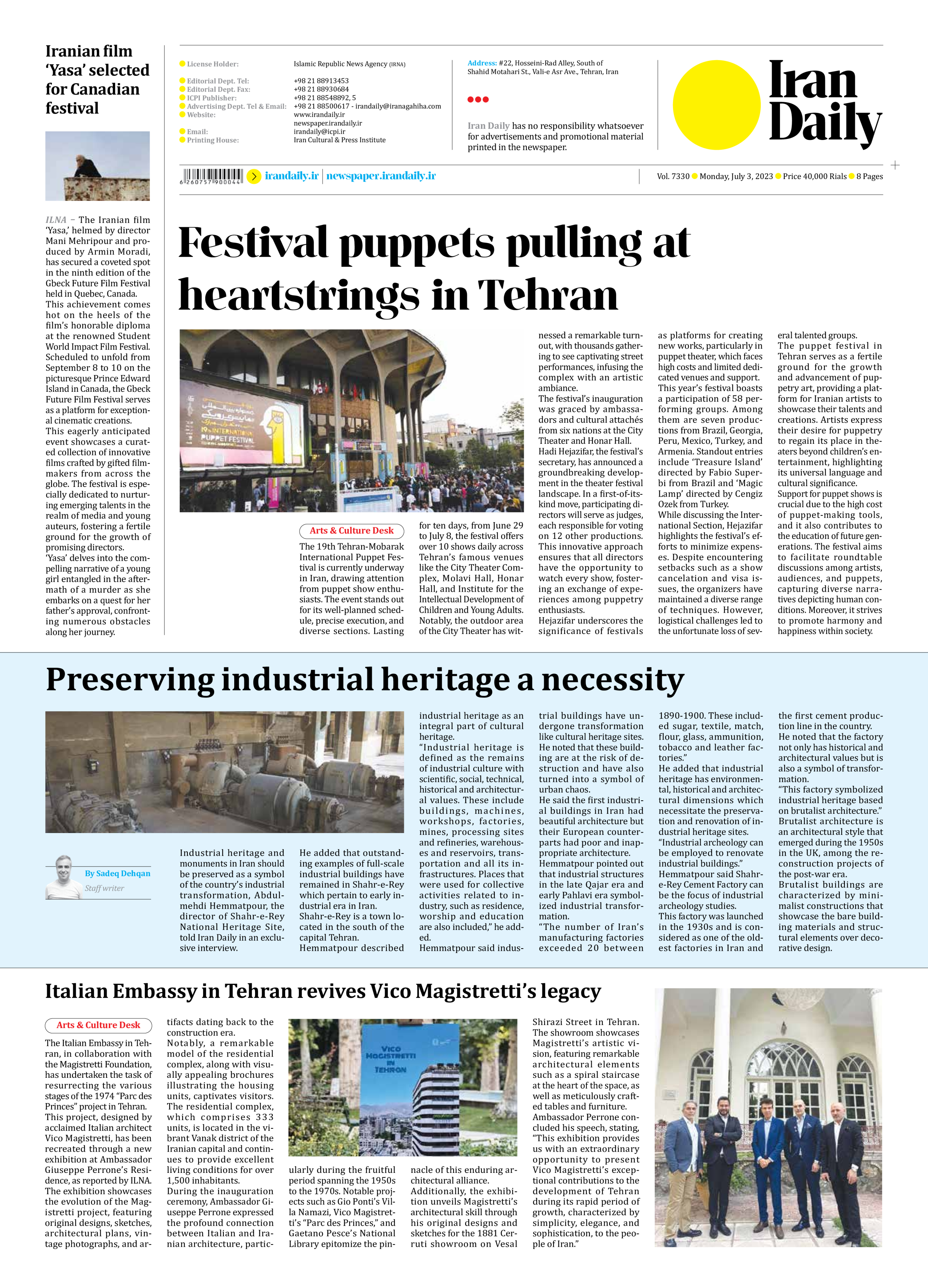
Preserving industrial heritage a necessity
By Sadeq Dehqan
Staff writer
Industrial heritage and monuments in Iran should be preserved as a symbol of the country’s industrial transformation, Abdulmehdi Hemmatpour, the director of Shahr-e-Rey National Heritage Site, told Iran Daily in an exclusive interview.
He added that outstanding examples of full-scale industrial buildings have remained in Shahr-e-Rey which pertain to early industrial era in Iran.
Shahr-e-Rey is a town located in the south of the capital Tehran.
Hemmatpour described industrial heritage as an integral part of cultural heritage.
“Industrial heritage is defined as the remains of industrial culture with scientific, social, technical, historical and architectural values. These include buildings, machines, workshops, factories, mines, processing sites and refineries, warehouses and reservoirs, transportation and all its infrastructures. Places that were used for collective activities related to industry, such as residence, worship and education are also included,” he added.
Hemmatpour said industrial buildings have undergone transformation like cultural heritage sites.
He noted that these building are at the risk of destruction and have also turned into a symbol of urban chaos.
He said the first industrial buildings in Iran had beautiful architecture but their European counterparts had poor and inappropriate architecture.
Hemmatpour pointed out that industrial structures in the late Qajar era and early Pahlavi era symbolized industrial transformation.
“The number of Iran’s manufacturing factories exceeded 20 between 1890-1900. These included sugar, textile, match, flour, glass, ammunition, tobacco and leather factories.”
He added that industrial heritage has environmental, historical and architectural dimensions which necessitate the preservation and renovation of industrial heritage sites.
“Industrial archeology can be employed to renovate industrial buildings.”
Hemmatpour said Shahr-e-Rey Cement Factory can be the focus of industrial archeology studies.
This factory was launched in the 1930s and is considered as one of the oldest factories in Iran and the first cement production line in the country.
He noted that the factory not only has historical and architectural values but is also a symbol of transformation.
“This factory symbolized industrial heritage based on brutalist architecture.”
Brutalist architecture is an architectural style that emerged during the 1950s in the UK, among the reconstruction projects of the post-war era.
Brutalist buildings are characterized by minimalist constructions that showcase the bare building materials and structural elements over decorative design.







